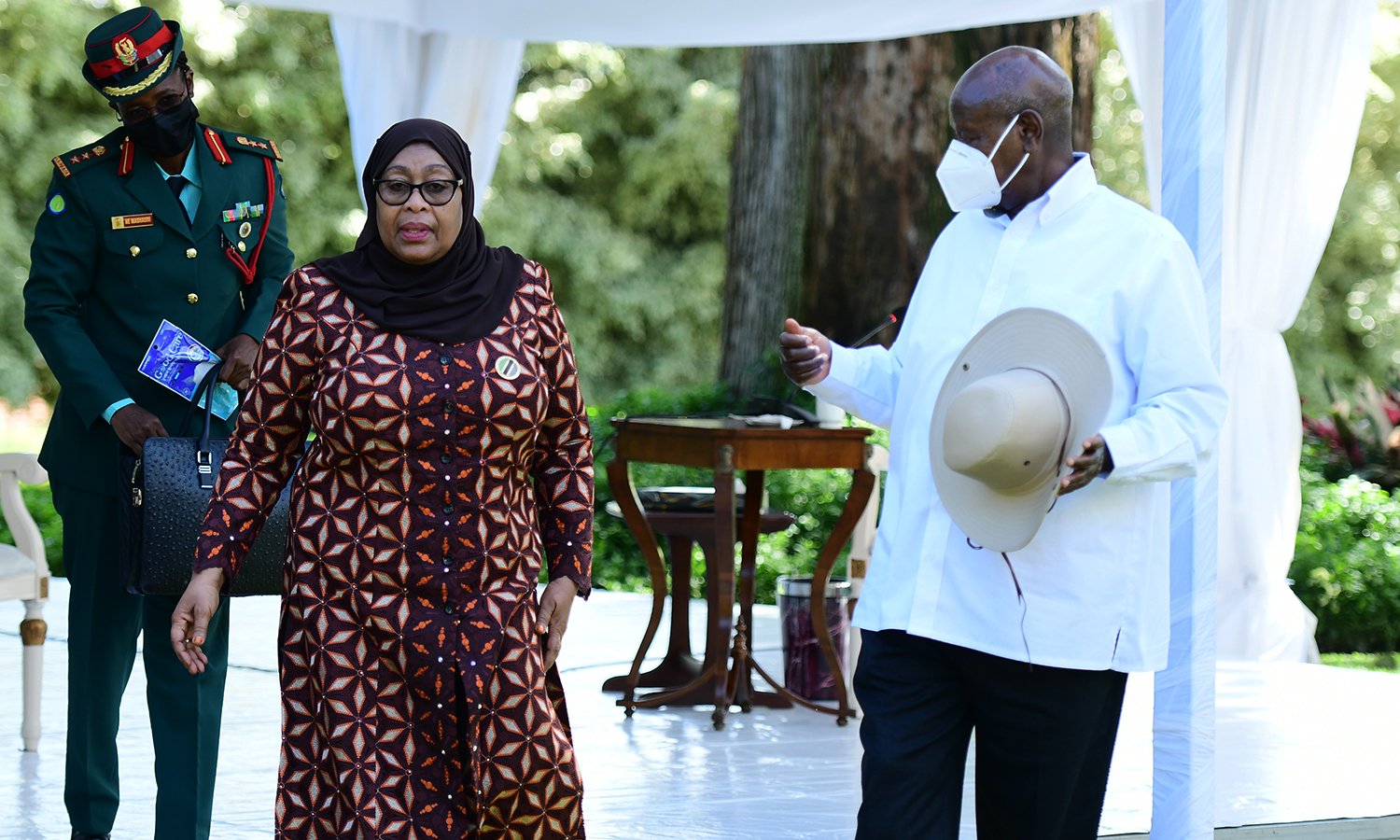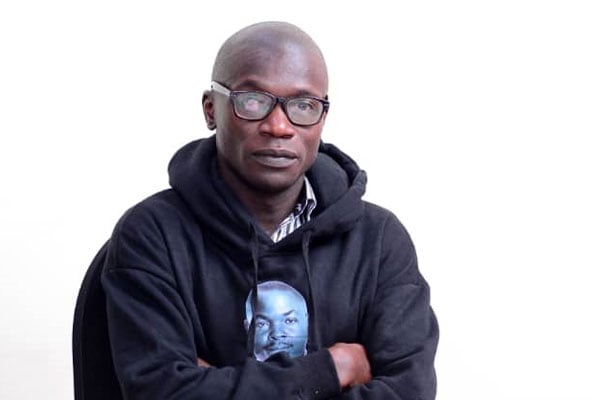Prime
Tanzania-Uganda ties: Decades of brotherly relations forged from war

President Museveni (right) and his Tanzanian counterpart Samia Suluhu Hassan in Kampala in May 2023. PHOTOS/ FILE
What you need to know:
- It is now 43 years since Tanzanian forces started leaving Uganda where they had been stationed since 1979 after spearheading the overthrow of Idi Amin. But Derrick Kiyonga writes that with Tanzania playing a key role in Uganda’s shift from reliance on Kenya, a case of adversaries-turned-allies is easy to make.
When Tanzanian president Samia Suluhu Hassan visited Uganda in May 2022, she dangled a host of incentives to attract Ugandan traders back to the Dar es Salaam port. This included removing trade barriers and improving investment in transport along the central corridor.
President Suluhu secured a bilateral agreement with Uganda to bring down the tab that Uganda-bound cargo trucks from Dar es Salaam – through Mutukula – picked from $500 (Shs1.9m) per 100km to $10 (Shs38,000). This went into effect at the start of the 2022/2023 Financial Year.
Even with these incentives, most of the goods in Uganda come through Mombasa, with traders citing the costs of going through Dar es Salaam as being high.
Tanzania for years has been trying to position Dar es Salaam as an alternative to Mombasa as a gateway to the East African region. And in line with such ambitions, it recently made public its plan to complete the $420 million Dar es Salaam Maritime Gateway Project (DMGP) and plans to expand its maritime infrastructure as it opened storage for cargo destined to four East African Community (EAC) states.
Yet President Museveni’s hope of ensuring that his government imports oil rests on Dar es Salaam after the deal with Kenya suffered a stillbirth after several political and legal impediments.
When Museveni signed into law the Petroleum Supply (Amendment) Bill, 2023, the plans were that by January the Uganda National Oil Company (Unoc) would have full responsibility for the importation of petroleum products in a bid to decrease pump fuel prices.
“A whole country buying from middlemen in Kenya and anywhere else!! Amazing but true,” Museveni said last year.
“In many cases, these wonderful people have let down their country. Take the issue of importing petroleum of the magnitude of 2.5 billion litres per annum valued at about $2 billion (Shs 7.6 trillion),” he added.
Things have not gone according to plan with a court in Kenya refusing to throw out a petition filed by some Kenyan nationals barring state-owned Energy and Petroleum Regulatory Authority from issuing a petroleum import licence to Unoc.
With such, Museveni has not waited for long, instead instructed Ministry of Energy officials to rush to Tanzania. In a recent meeting, Energy minister Ruth Nankabirwa proposed a policy for bulk importation and supply of petroleum products to reduce fuel prices.
Museveni’s relationship with Tanzania dates way back to the 1970s when his rebel outfit the Front for National Salvation (Fronasa) set base in the country in its efforts to oust Idi Amin who had overthrown Milton Obote in the 1971 military coup.
Museveni’s group wasn’t a lone in taking refuge in Tanzania; Milton Obote’s Kikosi Maalum too camped there.
According to historian George Roberts, the standoff between Tanzania and Uganda started in September 1972 when around 1,000 armed Obote supporters crossed into southern Uganda from north-western Tanzania and advanced on Kampala, with the tacit support of Tanzania’s president Julius Nyerere.
Amin responded by bombing Tanzanian towns near the border. Nyerere, it said was encouraged by his generals to respond in kind, but preferred to resolve the conflict via a settlement brokered by Siad Barre, the Somali president.
On October 5, 1972, Tanzania and Uganda, Roberts says, signed the five-point Mogadishu Agreement in which both agreed to withdraw troops to 10kms behind the border and cease to support forces hostile to the other’s regime. The agreement did little to stem the hostility between the two leaders, with Nyerere refusing to share a platform with Amin.

Former president Idi Amin
For instance, in 1975, Nyerere declined to travel to an OAU Summit held in Kampala and chaired by Amin.
On November 1, 1978, Amin upped the ante when he announced that he had annexed the Kagera Salient, a 1,800km triangle of land straddling the area between the border and the Kagera River, in the corridor between Rwanda and Lake Victoria.
The salient was an irregularity of Anglo-German colonial boundary-drawing that split ethnic groups between Tanzania and Uganda.
Differing from the Foreign Commonwealth and Development Office’s understanding, the border had been subject to long-standing claims by Amin, especially as it had been used as a base for incursions by Ugandan rebellious fighters, like Museveni, from Tanzania.
Neither state was in any condition to fight a war. Uganda’s economy was struggling and its army gripped by mutiny, while the Tanzanian economy was suffering from the negative consequences of Nyerere’s socialist policies, particularly the shortcomings of his forced villagisation campaign.
Following concerted diplomatic efforts, Uganda’s troops had withdrawn from the Kagera Salient but that wasn’t enough for Nyerere who ordered his troops in January 1979 to cross into Uganda, attacking the border town of Mutukula.
Many historians contend that Tanzanian military officers had determined that the Kagera Salient would remain under threat until Ugandan forces had been removed from the high ground overseeing the frontier at Mutukula border point.
Nyerere had envisioned that dissidents such as Museveni’s Fronasa and Kikosi Maalum had enough firepower to lead the final push against Amin, but this wasn’t the case. After taking key cities such as Mbarara and Masaka, Tanzanian forces eventually entered Kampala to little resistance on April 10, 1979.
Tanzanian forces remained in Kampala until 1981 after Museveni, who had been defeated in the controversial 1980 General Election, declared that his National Resistance Army (NRA) had started the guerrilla war in the Luweero jungles.
Nyerere’s decision to withdraw 10,000 soldiers left the security of Uganda in the hands of about 5,000-man ragtag Ugandan Army and this is said to have tipped the war in favour of the NRA guerrillas. Even when his NRA emerged victorious in 1986 Museveni spoke about Nyerere in glowing terms.
“Nyerere was determined to create a powerful centre of gravity in the form of the East African federation,” Museveni said of Nyerere in 2019 when Tanzania was celebrating Nyerere Day. No wonder whenever he has failed to agree with Kenya in building critical infrastructure, Museveni has pivoted to Tanzania where his son Gen Muhoozi Kainerugaba was born.
This was the case when Uganda failed to agree with Kenya on constructing the oil pipeline. It’s said Kampala preferred Tanzania because its government owns the land yet Kenya’s government had to compensate individuals who own the land.
Another issue was security at the Kenyan coastal town of Lamu, where the pipeline would end, is closer to Somalia on the Indian Ocean and there were fears that a pipeline could be a target for al-Shabaab militants.
Third, the Tanga port was already operational, while Lamu would only become available in 2022. But the reasons for dropping Lamu for Tanga seemed beyond economic.
“The oil companies insisted, no we need a pipeline,” Museveni said in an interview in 2022. “So, we had to agree to a pipeline mainly because it would also benefit our brothers in Tanzania. That’s why I agreed,” Museveni said.
Museveni’s relationship with Tanzania was there for everyone to see when, together with Suluhu, they launched the $87.7 million power project at Kikagati Power Company Ltd in Isingiro District, which shares a border with the Kagera region of Tanzania, last May.
“If Tanzania wants all 16MW from Kikagati, they should take it. I have no problem whatsoever with exporting our electricity to neighbours that want to pay for it,” Museveni said.
“No other Tanzanian president has been here. I was born in this part...I have grazed cows here and also fought battles here. My camp is behind that hill in Isingiro District,” Museveni said as he valued the presence of Suluhu, who said her country and Uganda have historical and genealogical relations that continue to improve.





